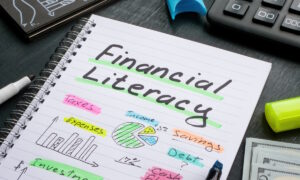Financial literacy and investment education have emerged as essential skills. Equipping young people with these skills not only prepares them for future financial independence but also contributes to the broader economy. Youth investment education programs play a pivotal role in shaping the next generation’s ability to navigate financial markets, make informed decisions, and secure their futures.
Why Investment Education Matters for the Youth
Financial literacy rates worldwide remain alarmingly low. According to studies, many adults lack basic knowledge about savings, credit, and investments. If financial education starts earlier, individuals are more likely to develop healthy financial habits and avoid common pitfalls.
Investment education goes beyond teaching how to save money; it empowers young people to grow their wealth strategically. By learning about the stock market, real estate, mutual funds, and other investment vehicles, the youth gain confidence in managing their finances. This knowledge helps them to combat financial anxiety, achieve financial goals, and even retire comfortably.
Moreover, investment education fosters critical thinking and risk assessment. Understanding the risks associated with various investment opportunities allows young individuals to make better decisions. It also equips them to adapt to economic challenges, such as inflation or market volatility. This foundation is vital in preparing them to face future uncertainties with resilience.
Components of Youth Investment Education Programs
Effective youth investment education programs typically include a mix of theoretical knowledge and practical experience. Below are the essential components that ensure the success of these initiatives:
Basic Financial Literacy:
Financial literacy serves as the cornerstone of investment education. Programs must first teach fundamental concepts such as budgeting, saving, and the difference between assets and liabilities. This knowledge lays the groundwork for understanding more complex investment topics.
Understanding Investment Vehicles:
Investment education programs introduce young learners to various investment options, including stocks, bonds, mutual funds, exchange-traded funds (ETFs), and real estate. By explaining the pros, cons, and risk levels of each option, these programs help students identify the best strategies for their goals.
Risk Management:
Teaching young people about risk management is crucial. They must understand that every investment carries risks, and the key is to minimize potential losses. Lessons on diversification, asset allocation, and long-term investing strategies are essential components of any robust program.
Practical Simulations:
Practical exercises, such as virtual stock trading platforms or investment games, provide hands-on experience. These tools help students apply theoretical knowledge to real-world scenarios, making the learning process engaging and impactful.
Mentorship Opportunities:
Programs that connect students with experienced investors or financial advisors add immense value. Mentorship offers guidance, real-world insights, and encouragement, fostering a deeper understanding of the investment world.
Digital Tools and Resources:
Integrating apps and online platforms into education programs enhances learning. Tools like financial calculators, budgeting apps, and investment tracking platforms help students apply what they learn effectively.
Benefits of Starting Early with Investment Education
The earlier young people learn about investing, the better positioned they are to build wealth over time. Here are some key benefits of starting investment education early:
Compounding Benefits:
Time is one of the most valuable assets in investing. Starting young allows individuals to take full advantage of compound interest, where earnings generate further earnings. Even small, consistent investments made early can grow significantly over decades.
Increased Confidence:
Early exposure to investing builds confidence. Young people who understand financial markets and investment strategies are more likely to make informed decisions without hesitation. This confidence often translates to other areas of life, including career and entrepreneurship.
Avoiding Financial Mistakes:
Many adults face financial challenges due to a lack of investment knowledge during their youth. By educating the younger generation, we can reduce common mistakes like overspending, accumulating debt, or falling prey to scams.
Developing a Growth Mindset:
Learning about investments fosters a growth-oriented mindset. It encourages young individuals to think long-term, set financial goals, and work towards achieving them with discipline and persistence.
The Role of Schools and Community Organizations
Educational institutions and community organizations play a crucial role in delivering youth investment education programs. Here’s how they can contribute:
Incorporating Financial Education into Curricula:
Schools can integrate financial literacy and investment topics into existing curricula. Subjects like mathematics, economics, or social studies can include lessons on personal finance and investing.
Workshops and Seminars:
Community organizations can host workshops, inviting financial experts to share insights and provide practical guidance. These events can cover topics ranging from retirement planning to understanding cryptocurrency.
Partnerships with Financial Institutions:
Collaborating with banks, investment firms, or fintech companies can provide students with access to valuable resources and mentorship. Such partnerships also expose young learners to industry trends and innovations.
Peer-Led Learning:
Encouraging older students or recent graduates to mentor younger peers creates a relatable learning environment. Peer-led programs often resonate more with youth, as they see examples of success among their contemporaries.
Challenges in Implementing Youth Investment Education Programs
While the benefits are clear, implementing these programs comes with challenges. Some common barriers include:
Lack of Resources:
Many schools and organizations face budget constraints, making it difficult to hire qualified instructors or provide high-quality materials.
Limited Awareness:
Parents, educators, and policymakers may not fully understand the importance of investment education, resulting in a lack of support for such initiatives.
Complexity of Financial Concepts:
Investment topics can be intimidating for beginners. Simplifying concepts without losing their essence requires skilled educators and well-designed materials.
Digital Divide:
While digital tools enhance learning, not all students have access to smartphones, computers, or reliable internet connections. Bridging this gap is essential to ensure inclusivity.
Strategies for Enhancing Youth Investment Education
To overcome these challenges and maximize the impact of youth investment education programs, consider the following strategies:
Engaging Content:
Use storytelling, gamification, and interactive tools to make learning enjoyable. Engaging content keeps students interested and motivates them to continue learning.
Parental Involvement:
Encouraging parents to participate in their children’s financial education reinforces lessons at home. Family discussions about budgeting, saving, and investing create a supportive environment.
Policy Advocacy:
Advocating for financial literacy policies at the local, state, or national level can help secure funding and resources for youth investment programs.
Continuous Learning:
Investment education should not be a one-time event. Providing ongoing learning opportunities, such as advanced courses or alumni networks, ensures that students continue to build their skills over time.
Conclusion
Youth investment education programs are vital for preparing the next generation to navigate the complexities of the financial world. By equipping young people with the knowledge, skills, and confidence to invest wisely, these programs pave the way for financial independence and economic stability. While challenges exist, innovative strategies and collaborative efforts can ensure the success of these initiatives. Ultimately, empowering the youth with investment education benefits not only individuals but also society as a whole, fostering a more financially literate and prosperous future.



































